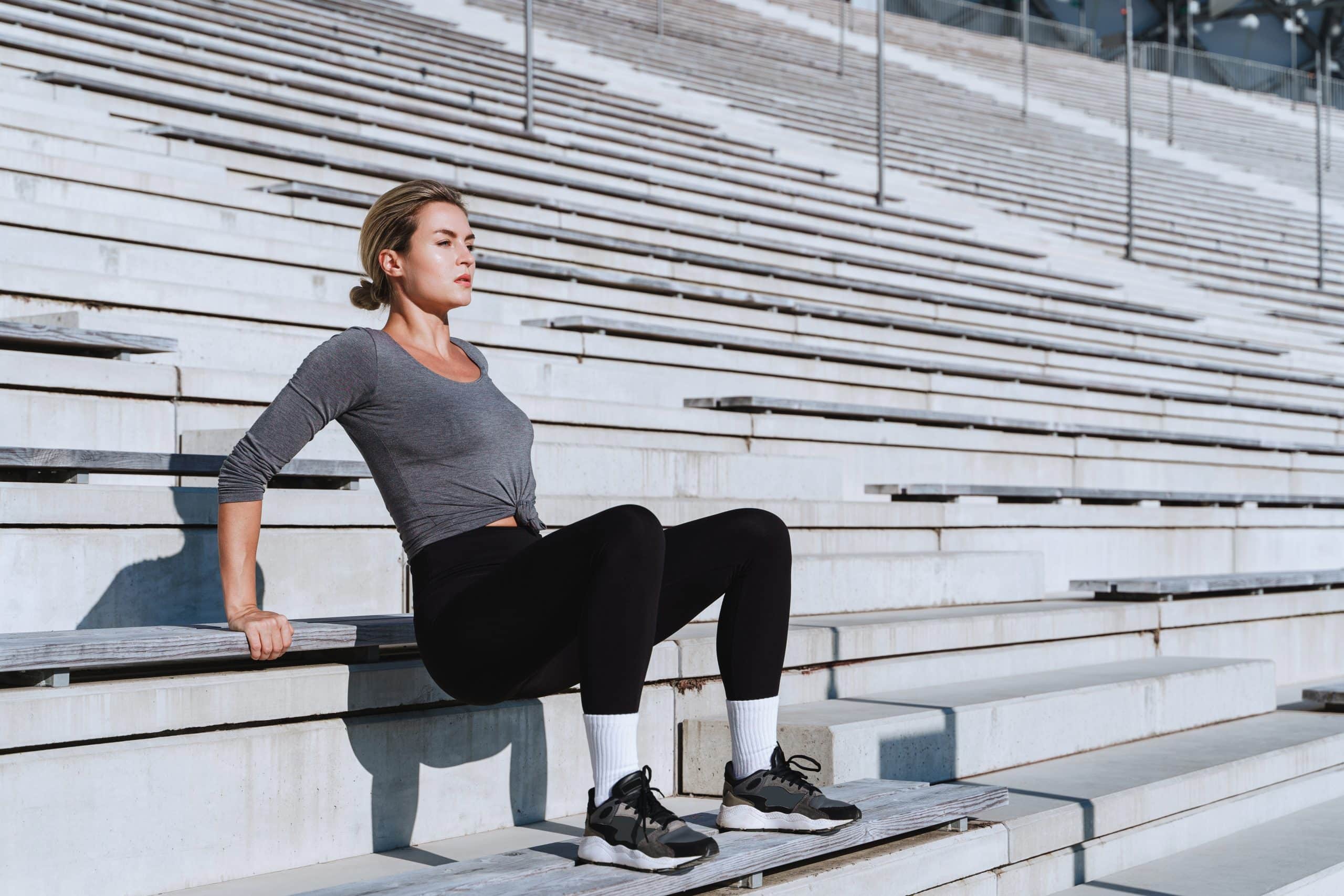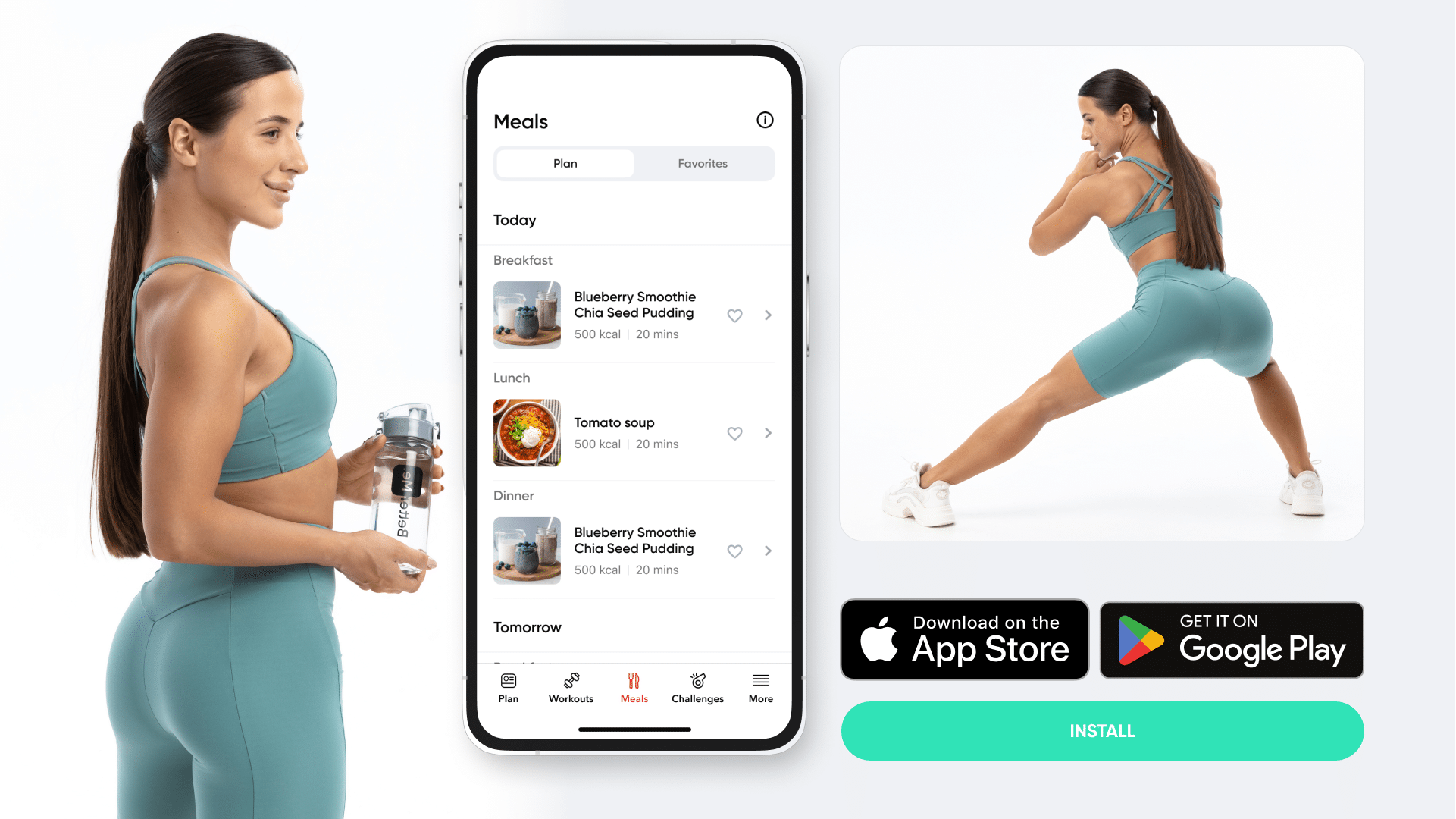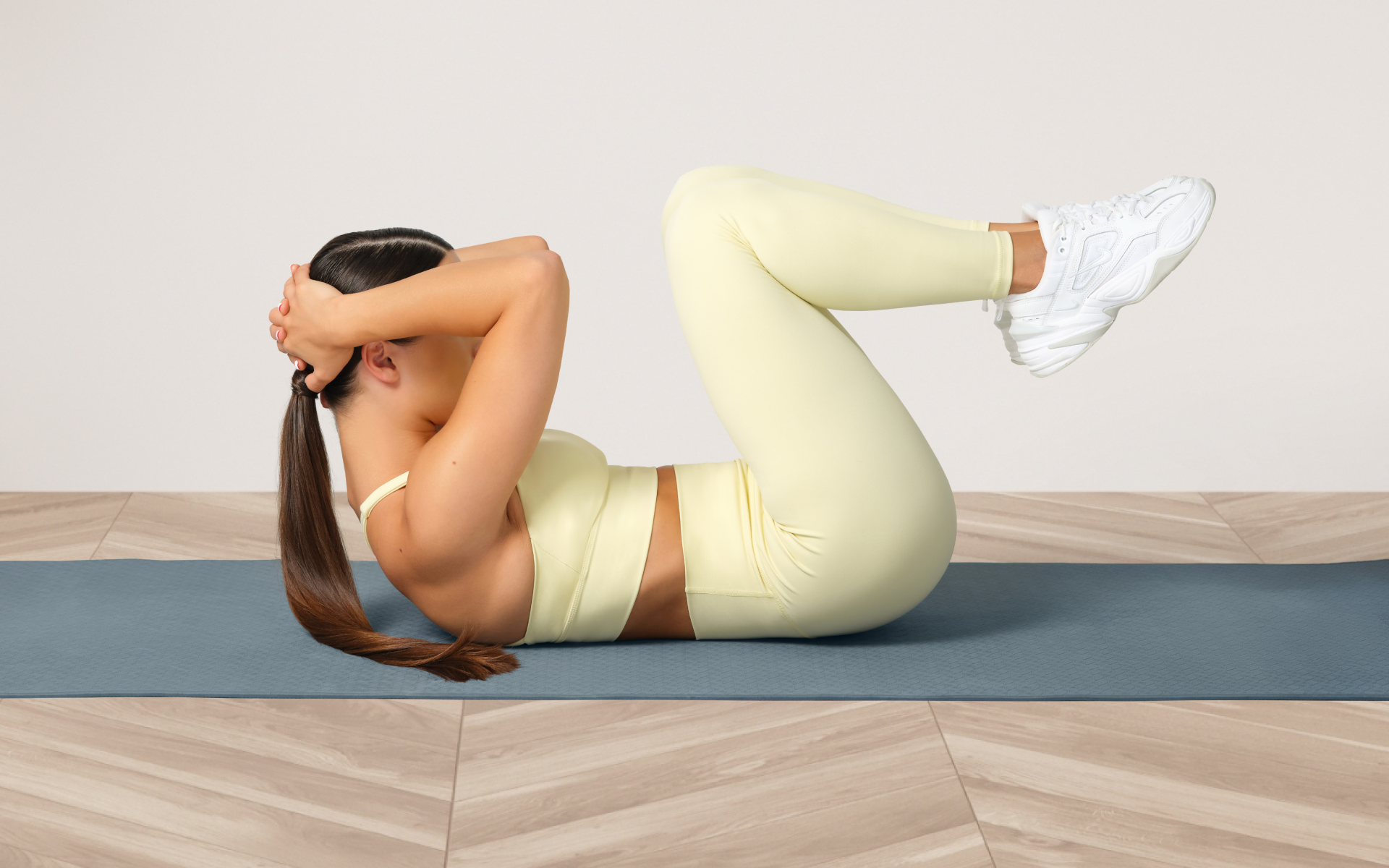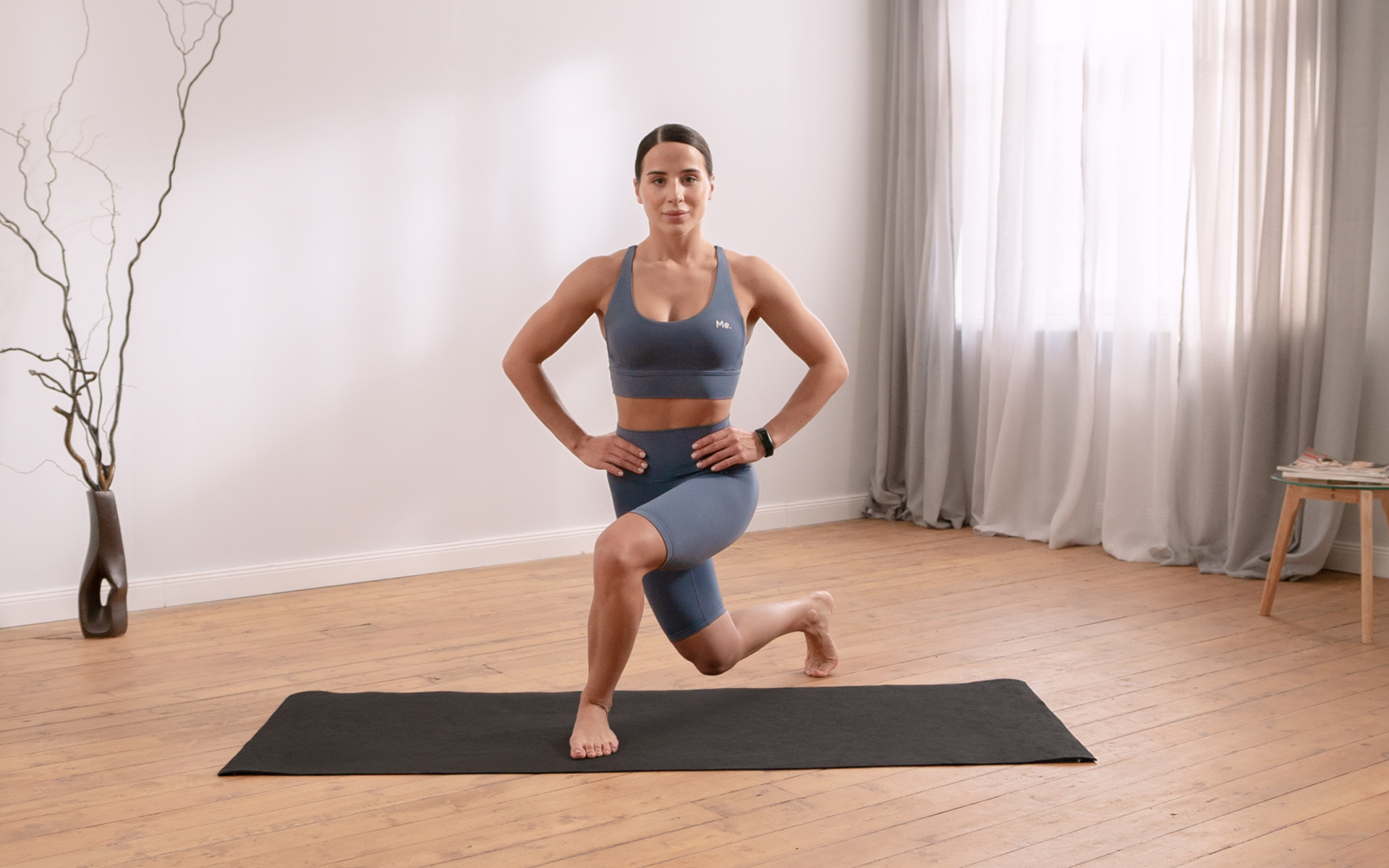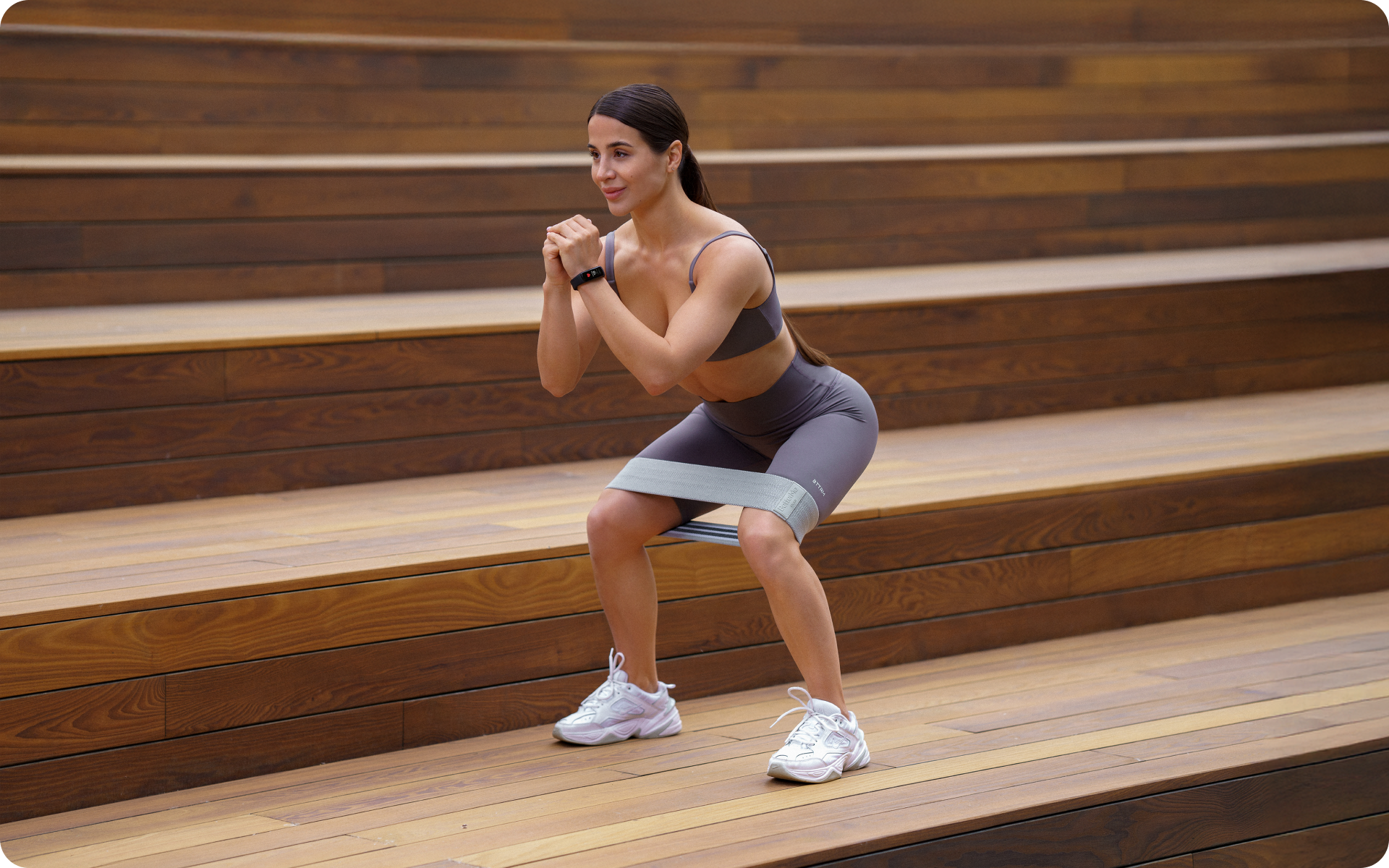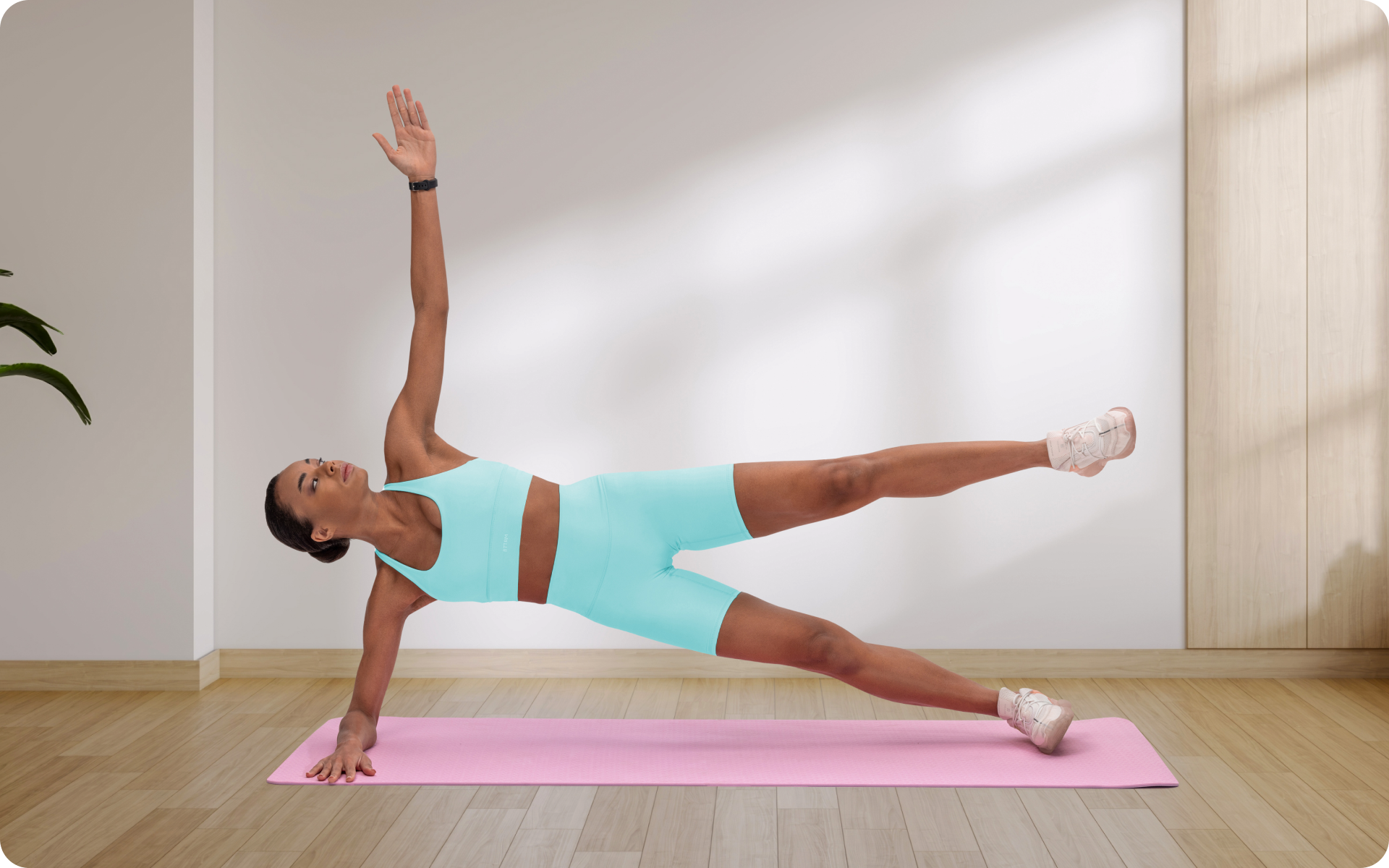The triceps are an essential muscle group located at the back of the upper arm. These muscles consist of three heads: the long head, the lateral head, and the medial head. Together, they help with extending the elbow and stabilizing the shoulder joint (2).
Tasks like pushing a door open or pushing a carriage for a child rely heavily on strong triceps. Even exercise movements focus on these muscles to improve overall arm strength and also aim to boost the overall size of the tricep muscle group. This can help the entire arm look bigger, so it is a very popular muscle group to focus on for bodybuilders or any exercise enthusiast. Think of push-ups, dips, and overhead presses; all these require a significant amount of triceps recruitment.
Tricep extensions are one way to effectively target and build this muscle group. The bodyweight tricep extension, in particular, is an excellent exercise requiring no special equipment.
Here’s how to perform this movement correctly and which exercises to add to it, to keep your workout challenging and effective.
How To Do Tricep Extensions Without Weights?
Full bodyweight tricep extensions can be a better option, in comparison to similar exercises that only target the chest or shoulders. This movement targets all three heads of the triceps, along with other stabilizing muscles in the core, arms and shoulders. Here’s how to do it:
- Find a suitable space: Start by placing yourself in a clear area where you have enough room to extend your arms fully in front of you.
- Get into the starting position: Kneel on the floor, engage your core, and keep your back straight with your knees about hip-width apart.
- Place your hands on the floor: Lean forward slightly and place your hands on the floor in front of you, shoulder-width apart. Your fingers should be pointing forward.
- Adjust your body angle: Walk your hands forward until your body forms a straight line from your knees to your shoulders. Your arms should be fully extended. This is similar to the starting position for a push up.
- Engage your core: Tighten your abdominal muscles to maintain a straight back and prevent your hips from sagging.
- Lower your body: Bend your elbows to lower your upper body towards the floor, keeping your elbows close to your sides. Aim to bring your forearms down to the floor, with your elbows forming a 90-degree angle.
- Pause briefly: Once your forearms touch the floor, pause for a second, maintaining tension in your triceps.
- Push back up: Straighten your arms to push your body back up to the starting position, using your triceps to drive the movement.
- Maintain control: Throughout the movement, make sure you maintain control and avoid using momentum. Your movements should be slow and deliberate with most of the emphasis on the lowering portion of the exercise. You will want this to be slow and controlled.
- Repeat: Perform the desired number of repetitions, focusing on maintaining proper form to maximize the effectiveness of the exercise and prevent injury.
Are Bodyweight Tricep Extensions Good?
Bodyweight tricep extensions are an excellent exercise for building arm strength and targeting the triceps. They can be particularly beneficial for beginners who may not have access to weights or resistance equipment. Here are some benefits of this exercise:
Muscle Hypertrophy
Muscle hypertrophy refers to the growth and increase in the size of muscle. Most of us start strength training with the goal of building muscle, and this exercise can certainly contribute to that (1).
Bodyweight tricep extensions are particularly effective for promoting muscle hypertrophy in the triceps due to the highly focused and repetitive nature of the movement.
When performed correctly, this exercise creates mechanical tension in the muscle fibers, a key component for muscle growth.
The eccentric (lowering) phase of the movement, in particular, places a significant load on the triceps, promoting muscle damage and subsequent repair, which leads to growth. This is why slowing down that lowering phase is so important. This will force you to focus on the tricep muscles and really engage them in the exercise. It is common that the muscles in the chest take over this movement, so slowing things down can be very beneficial in targeting this group.
Bodyweight tricep extensions can be easily progressed by adjusting the angle of the body or increasing the number of repetitions, ensuring that the muscles are consistently challenged. This continuous adaptation is critical for hypertrophy, as muscles need to be subjected to increasing levels of stress to continue growing (3).
The stabilization required during this exercise engages multiple muscle groups. Below is a list of all bodyweight tricep extensions muscles worked (both directly and indirectly):
Primary Muscles
- Triceps Brachii: The triceps brachii is the primary muscle targeted during bodyweight tricep extensions. It consists of three heads:
- Long Head: This part extends from the scapula to the elbow and helps in shoulder extension.
- Lateral Head: Located on the outer side of the arm, it is responsible for extending the elbow.
- Medial Head: Situated beneath the long and lateral heads, it aids in elbow extension.
Secondary Muscles
- Deltoids:
- Anterior Deltoid: The front portion of the shoulder, which assists in stabilizing the shoulder joint during the movement.
- Lateral Deltoid: Side portion of the shoulder, providing additional stabilization.
- Pectoralis Major: The large chest muscle, particularly the upper section, provides support and stabilization during the exercise.
Stabilizing Muscles
1. Core Muscles, a majority of which are listed below:
- Rectus Abdominis: Helps in maintaining a straight back and core stability.
- Obliques: Assists in maintaining balance and preventing rotation of the torso.
2. Forearm Muscles:
- Flexor Carpi Radialis: Engages to stabilize the wrist during the push back up.
- Extensor Carpi Radialis: Also helps stabilize the wrist throughout the movement.
3. Serratus Anterior: Located along the side of the rib cage, this muscle helps in the protraction and stabilization of the scapula.
By engaging these muscles, bodyweight tricep extensions not only target and build the triceps but also enhance overall shoulder stability, core strength, and upper body functionality.
Yanking yourself back in shape has never been so easy with our game-changing fitness app! Start transforming your life with BetterMe !
Joint Stability
Strong triceps are crucial for maintaining proper joint stability, particularly in the shoulders. These muscles play a significant role in stabilizing the shoulder joint, while performing various movements. By strengthening your triceps through bodyweight extensions, you can prevent injuries and discomfort caused by poor joint stability.
In addition, this exercise also engages other stabilizing muscles such as the deltoids and core muscles, promoting overall joint stability.
Convenience and Versatility
Bodyweight tricep extensions require minimal equipment, making them convenient and accessible for the majority. They can be performed anywhere, whether at home or in a gym, without the need for any specialized equipment.
They are also versatile and can be easily modified to suit your fitness level. For beginners, performing this exercise with bent knees can help reduce the weight load on the arms, while still targeting the triceps effectively. For advanced individuals, elevating the feet or using resistance bands can add an extra challenge to the exercise.
How To Work Triceps With Bodyweight (Exercise Progression and Variations)
The basic bodyweight tricep extension can be modified and progressed in various ways to target the triceps muscles from different angles and intensities.
Below are some bodyweight tricep extension progression and variation options that you can incorporate into your workout routine:
Incline Bodyweight Tricep Extension
This variation of the bodyweight tricep extension places more emphasis on the long head of the triceps. It also engages the deltoids, pectoralis major, and core muscles to a greater extent.
To perform this exercise:
- Start in a high plank position with your hands placed on a raised surface such as a bench or chair.
- Engage your core and lower yourself down until your forehead touches the edge of the elevated surface while keeping your elbows close to your sides.
- Push back up using your triceps to return to the starting position.
- Repeat for desired repetitions.
Decline Bodyweight Tricep Extension
This advanced variation shifts the focus onto the lower triceps and engages more of the core muscles for stability.
To perform this exercise:
- Start in a high plank position with your feet placed on an elevated surface such as a bench or chair.
- Engage your core and lower yourself down until your forehead touches the ground while keeping your elbows close to your sides.
- Push back up using your triceps to return to the starting position.
- Repeat for desired repetitions.
Kneeling Bodyweight Tricep Extension
This variation is suitable for beginners as it reduces the weight load on the arms.
To perform this exercise:
- Start in a kneeling position with your hands placed on an elevated surface such as a bench or chair.
- Engage your core and lower yourself until your forehead touches the edge of the elevated surface while keeping your elbows close to your sides.
- Push back up using your triceps to return to the starting position.
- Repeat for desired repetitions.
Read more: Calisthenics Warm Up 101: Bodyweight Exercises To Get Your Blood Flowing Before Your Workout
Tricep Dips
Tricep dips are a more advanced variation of bodyweight tricep extensions that target the triceps muscles and also engage the chest, shoulders, and core muscles.
To perform this exercise:
- Start by placing your hands on a bench or chair behind you with your feet flat on the ground.
- Engage your core and lower yourself down until your elbows reach a 90-degree angle while keeping your back close to the edge of the bench.
- Push back up using your triceps to return to the starting position.
- Repeat for desired repetitions.
Reverse Tricep Dips
This variation targets the triceps from a different angle, providing a new challenge for your muscles.
To perform this exercise:
- Start by placing your hands on a bench or chair in front of you with your feet flat on the ground, facing away from the bench.
- Engage your core and lower yourself until your elbows reach a 90-degree angle while keeping your back close to the edge of the bench.
- Push back up using your triceps to return to the starting position.
- Repeat for desired repetitions.
Diamond Push-Ups
Diamond push-ups are a challenging variation that requires more strength and stability from the triceps muscles.
To perform this exercise:
- Start in a high plank position with your hands close together, forming a diamond shape between your index fingers and thumbs.
- Engage your core and lower yourself until your chest touches the back of your hands while keeping your elbows close to your sides. This is very similar to a push up but instead you will have your hands in a diamond shape rather than being spread apart at shoulder width.
- Push back up using your triceps to return to the starting position.
- Repeat for desired repetitions.
Close Grip Incline Push-Ups
This variation targets the triceps muscles from a different angle and also engages the chest, shoulders, and core muscles.
To perform this exercise:
- Start in a high plank position with your hands placed on an elevated surface such as a bench or chair, shoulder-width apart.
- Engage your core and lower yourself until your chest touches the edge of the elevated surface while keeping your elbows close to your sides.
- Push back up using your triceps to return to the starting position.
- Repeat for desired repetitions.
If you wish to cinch your waist, tone up your bat wings, blast away the muffin top – our fitness app was created to cater to all your needs! BetterMe won’t give excess weight a chance!
Tricep Floor Dips
This variation is similar to tricep dips, but it is performed on the floor, making it a more challenging exercise.
To perform this exercise:
- Start by sitting on the ground with your hands placed behind you and fingers pointed towards your feet.
- Lift yourself off the ground and walk your feet out until they are straight in front of you.
- Engage your core and lower yourself down until your elbows reach a 90-degree angle while keeping your back close to the ground.
- Push back up using your triceps to return to the starting position.
- Repeat for desired repetitions.
Find more body weight tricep workouts in our, bodyweight tricep exercises blog
Both skull crushers and tricep extensions target the triceps muscles effectively. However, skull crushers are typically performed with weights, while tricep extensions can be done using just bodyweight. If you are looking to build strength and muscle mass over time, skull crushers may be a better option due to the ability to progressively overload the weight. But if you prefer bodyweight exercises or want to improve your tricep strength without weights, then tricep extensions may be a better choice. Yes, tricep extensions are an effective exercise for targeting and strengthening the triceps muscles. They also engage other muscle groups such as the chest, shoulders, and core, providing a full-body workout. Incorporating variations of tricep extensions into your workout routine can lead to stronger and more defined arms You may find tricep extensions challenging because they require a significant amount of strength from the triceps muscles and stability from the core muscles. Additionally, proper form is crucial for this exercise, and if not done correctly, it can put unnecessary strain on your joints and lead to discomfort or injury. Yes, push-ups are an effective bodyweight exercise that engages the triceps muscles along with other muscle groups such as the chest, shoulders, and core. Variations of push-ups such as diamond push-ups or close grip incline push-ups can specifically target the triceps muscles (4). However, for a more isolated workout focused on the triceps, it is recommended to incorporate specific tricep exercises like extensions or dips into your routine. Yes, there are many bodyweight exercises that effectively work the triceps muscles, such as tricep extensions and dips. These exercises use your body weight as resistance and can be modified to increase or decrease difficulty.FAQs
Are Skull Crushers Better Than Tricep Extensions?
Are Tricep Extensions Worth It?
Why Are Tricep Extensions So Hard?
Do Push Ups Work Triceps?
Can You Work Triceps Without Weights?
The Bottom Line
Bodyweight tricep extensions are a fantastic addition to any upper body workout. They can promote muscle hypertrophy, improve joint stability, and enhance overall functionality. Progressing this exercise can help continuously challenge and strengthen your triceps, leading to stronger and more defined arms. Variations, like using resistance bands or elevating the feet, can add an extra challenge as you progress.
DISCLAIMER:
This article is intended for general informational purposes only and does not serve to address individual circumstances. It is not a substitute for professional advice or help and should not be relied on for making any kind of decision-making. Any action taken as a direct or indirect result of the information in this article is entirely at your own risk and is your sole responsibility.
BetterMe, its content staff, and its medical advisors accept no responsibility for inaccuracies, errors, misstatements, inconsistencies, or omissions and specifically disclaim any liability, loss or risk, personal, professional or otherwise, which may be incurred as a consequence, directly or indirectly, of the use and/or application of any content.
You should always seek the advice of your physician or other qualified health provider with any questions you may have regarding a medical condition or your specific situation. Never disregard professional medical advice or delay seeking it because of BetterMe content. If you suspect or think you may have a medical emergency, call your doctor.
SOURCES:
- An Evidence-Based Narrative Review of Mechanisms of Resistance Exercise–Induced Human Skeletal Muscle Hypertrophy (2022,nih.gov)
- Anatomy, Shoulder and Upper Limb, Triceps Muscle (2023,nih.g0v)
- Progression of volume load and muscular adaptation during resistance exercise (2014,nih.gov)
- The rise of push-ups: A classic exercise that can help you get stronger (2019,harvard.edu)
